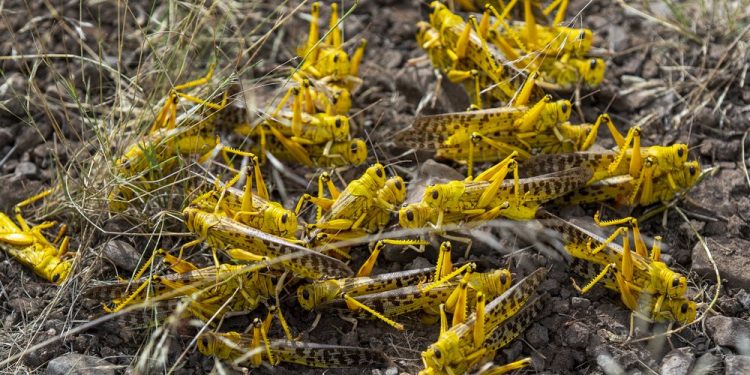Ministry of Agriculture has requested for a supplementary budget of shs 16 billion to fight locusts which have since affected 28 districts in North and Eastern regions.
Vincent Ssempijja, the Minister of Agriculture has Tuesday told the press at Media Center that Uganda risks revenue amounting to $218 million (about shs 797 billion) if the locusts devour crops.
“Potential Revenue Risk: For some of the key crops that are vulnerable to the Desert Locust invasion in the affected areas; below is a summary of the export revenue earned by Uganda from these crops in 2018: Fruits and Vegetables: US$ 40.6million, Maize: US$ 106.8million, Cotton: US$44.3million, Simsim: US$ 26.6million. Collectively, this would come to US$ 218.3million per annum potential revenue for Uganda that is at risk from just 4 crops of the 11 crops at stake if we did nothing,” he said.
He added that Locust Swarms in Uganda have now been confirmed in the following sub-regions: Karamoja, Teso, Acholi, Lango and Sebei.
“The existing swarms are classified as mature adult locusts that are mainly laying eggs. However, a new swarm of locusts entered Uganda from Kenya through Nakabat, Rupa sub- county at the border with Kenya, yesterday. Our field teams are following the swarm for effective control,” said Mr Ssempijja.
It is anticipated that the first swarms that invaded the country on February 9th, 2020 laid eggs; and these eggs may hatch into hoppers – the most destructive stage of the desert locust lifecycle, anytime.
“Our technical teams and the UPDF are on the ground boosting surveillance to ensure that the emerging generation of locusts is controlled.”
He noted that a DLCO aerial spraying aircraft has been received in the country and is in Moroto as we speak. Ground spraying is also still being carried out as Government procures more chemical supplies to be used by the trained experts.



